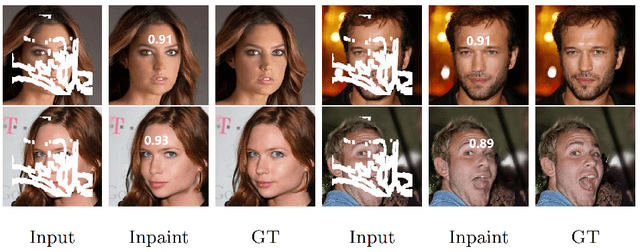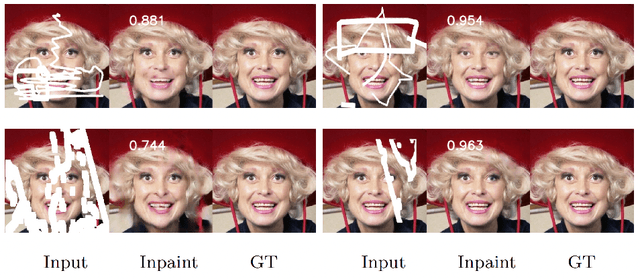V-LinkNet: Learning Contextual Inpainting Across Latent Space of Generative Adversarial Network
Paper and Code
Jan 02, 2022



Deep learning methods outperform traditional methods in image inpainting. In order to generate contextual textures, researchers are still working to improve on existing methods and propose models that can extract, propagate, and reconstruct features similar to ground-truth regions. Furthermore, the lack of a high-quality feature transfer mechanism in deeper layers contributes to persistent aberrations on generated inpainted regions. To address these limitations, we propose the V-LinkNet cross-space learning strategy network. To improve learning on contextualised features, we design a loss model that employs both encoders. In addition, we propose a recursive residual transition layer (RSTL). The RSTL extracts high-level semantic information and propagates it down layers. Finally, we compare inpainting performance on the same face with different masks and on different faces with the same masks. To improve image inpainting reproducibility, we propose a standard protocol to overcome biases with various masks and images. We investigate the V-LinkNet components using experimental methods. Our result surpasses the state of the art when evaluated on the CelebA-HQ with the standard protocol. In addition, our model can generalise well when evaluated on Paris Street View, and Places2 datasets with the standard protocol.
 Add to Chrome
Add to Chrome Add to Firefox
Add to Firefox Add to Edge
Add to Edge